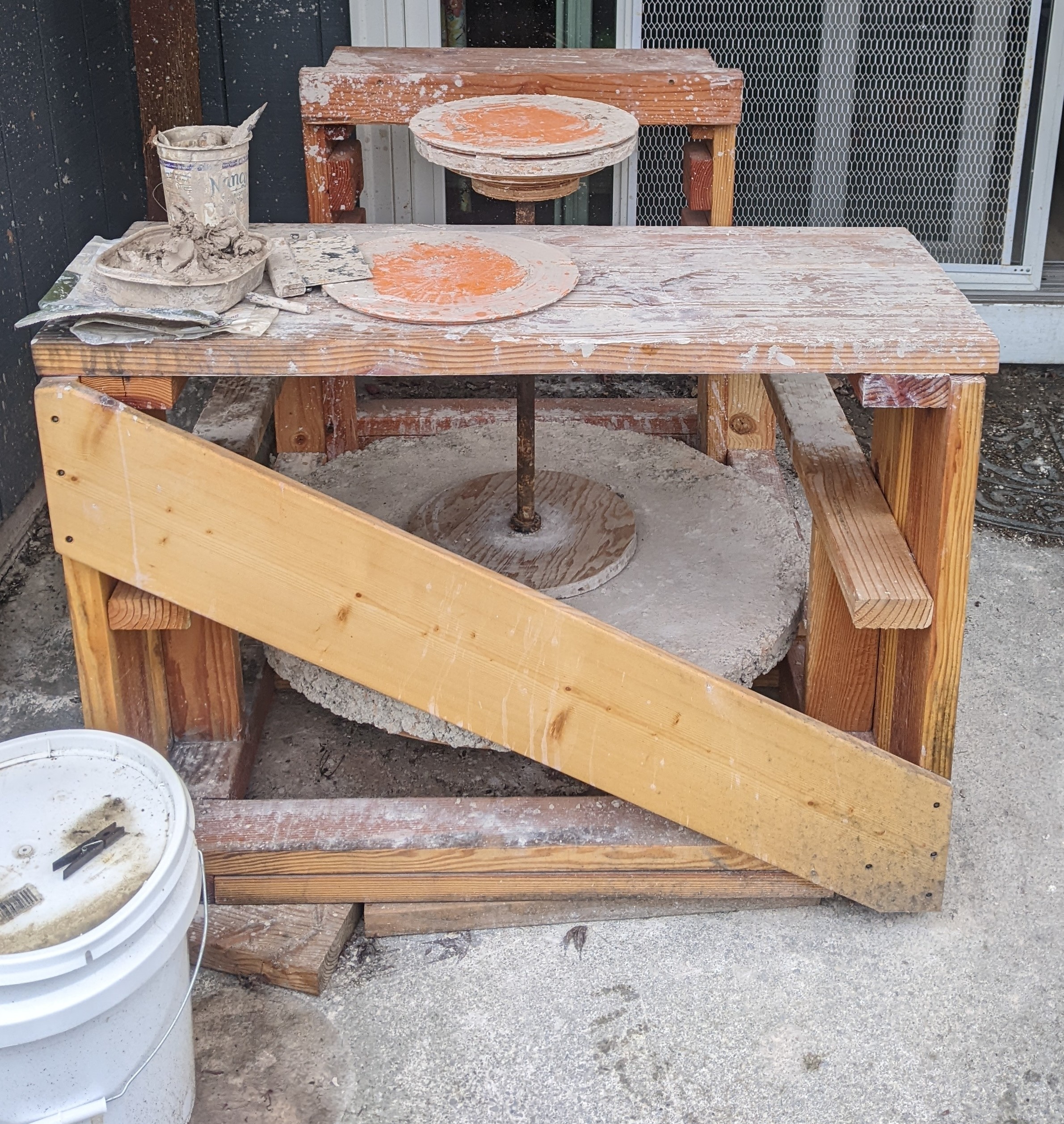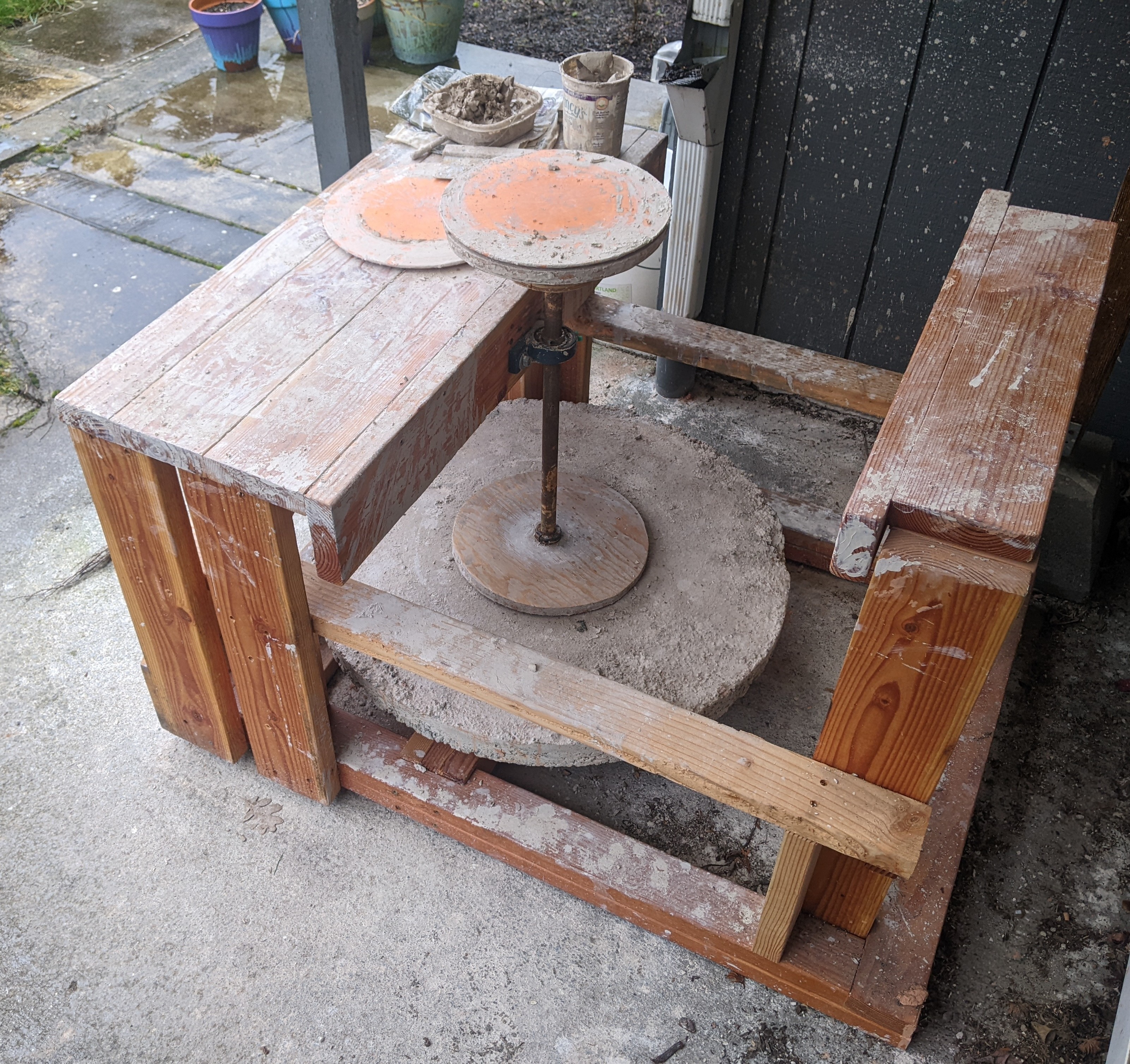Alexa Drake
Pottery-wheel
When I moved from Wisconsin to the Pacific Northwest, I brought only what I could fit into my Prius, my dog and I occupying the front seats--my bike, my guitar, and whatever else that had sentimental value--and that didn't include much in the way of dishware. Intending to restock some necessities, standing in the aisle of Target, I realized that this was a perfect opportunity to learn to make my own dishware. I bought a couple of bowls, a plate or two, enough to get by, and started looking into pottery-wheels.
I had never thrown pottery when I decided to build this. I shopped around for pottery-wheels, but new to the hobby as I was, the options were intimidating. Buying things, in the 2020's, has become something of a gamble; will it withstand years of use? how reliably will it work? will it technically work, but ultimately add friction to the hobby that might make it more difficult for me to engage with the hobby? Then I had saw a kick-wheel on the PBS show Craft in America, and immediately knew that that was how I wanted to throw pottery; that was something that I could build, understand, and, should it be necessary, repair.
The internet quickly delivered instructions to build exactly what I wanted. Almost.

Once it was assembled and the steel-rod was plumb and the bat-platform was level and I was throwing--or attempting to throw--my first pots, it was immediately obvious that the frame needed more support against racking. It takes a lot of effort to get the wheel moving and, less, to keep it spinning; each kick a small impulse still sufficient to introduce variation into the plumb-and-level-ness I had calibrated.
Unfortunately, racking is a natural consequence of building with rectangles, and when building furniture, is usually addressed in one of two ways. For furniture such as book-cases, dressers, or cabinets, a rectangle of plywood nailed into a rabbet on the back-side adds a lot of stability and strength, but for a project such as this, that must remain stable in dynamic conditions, that is exposed to weather and water and clay, I opted to install a brace at an angle, effectively turning the rectangle into two much more stable triangles. The pine 1-by-8 run that I screwed diagonally into the frame alleviated all of the racking issues.

Throwing pottery has become a cherished hobby, a great way to disconnect from the demands of life in the twenty-first century, to turn my mind and my body over to the clay; wedging, centering, forming; not pushing or forcing, but being and being met.